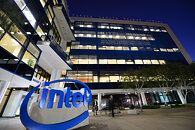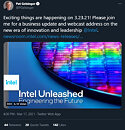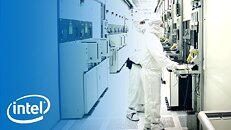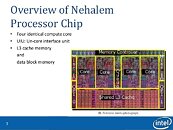
Intel In Talks To Purchase GlobalFoundries for $30 Billion
Intel is exploring a deal to purchase GlobalFoundries for roughly $30 billion according to people familiar with the matter, which would serve as Intel's largest acquisition to date. GlobalFoundries is owned by Mubadala Investment Co and it was widely reported that the company was planning an initial public offering later this year. This latest report comes as Intel continues talks with RISC-V chip designer SiFive for a $2 billion purchase as part of a major restructuring effort led by new CEO Pat Gelsinger. Intel is planning to boost its manufacturing capacity with the IDM 2.0 initiative where they have already committed to building two new fabs in Arizona and will offer manufacturing services to other countries. GlobalFoundries currently holds about 7% of the global foundry market by revenue and has several large customers including AMD, Qualcomm, and NVIDIA.


















